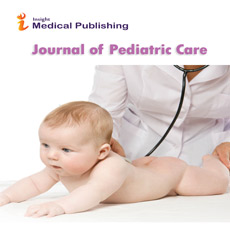Abstract
The clinical link of preschoolers picky eating behavior with their Growth, Development, Nutritional Status, and Physical Activity in Iraq/Kurdistan region
Abstract
Background: This study aimed to evaluate the prevalence of picky eating among preschoolers and to estimate the clinical association between eating behavior and growth, physical activity, development, and health status.
Methods: In this study, a structured questionnaire was used to perform a cross-sectional descriptive study of 800 parents of preschoolers aged 2–4 years in Kurdistan/Iraq. Data collected included: demographics, food preferences, eating behavior, body weight, BMI, height, development, physical activity, and records of medical illness. Data from children defined as picky or non-picky eaters responses were analyzed and compared using standard statistical tests according to parental’ questionnaire.
Results: The mean age of the children was 2.85 years; among 800 participants, 620 (77%) were picky eaters. Compared with non-picky eaters 180 (23%), z-score of weight-for-age, height-for-age, and body mass index (BMI)-for-age in picky eaters was 0.91, 0.73, and 0.44 SD lower, respectively. There were significant variations of rates in the weight-for-age, height-for-age, and BMI-for-age percentiles <15, between picky and non-picky eaters (P = 0.04, 0.023, and 0.005, respectively). Certain findings were higher in picky as compared to non picky preschoolers including negative social communication such as afraid of unfamiliar places 65% vs 13.3%, afraid of being lonely 14.6% vs 12.1%, poor physical activity 36.8% vs 17.7%, learning disability 16.2% vs 7%, attention deficit 11.8% vs 4.3%, speech delay 4.6% vs 3.3%, respectively).
Conclusion: The prevalence of picky eaters in preschool children was high, resulting in significant detrimental impacts on growth, nutritional status, development, physical activity, and health status.
Keywords Picky eating, preschoolers, growth and development, physical activity, health status
Background
Picky or selective eating often refers to those children with strong food preferences, consuming an insufficient variety of foods, restricting the intake of certain food groups, consuming a limited amount of food, or being reluctant to try new foods. Picky-eating behaviors are common in infancy and childhood (1); however, there is no specific medical definition for the term “picky or selective eater” (2–4).
The prevalence of selective eating among children varies in different countries. In one study in San Francisco, almost twenty to sixty percent of young children were reported by their parents not to be eating optimally (5). Another study of 120 children aged 2–11 years identified thirty nine percent as picky eaters (6), and picky eating prevalence as high as fifty percent was reported in children aged 19–24 months in a study carried out in North America (7). Picky eating behavior was reported by parents in half (54%) of the aged 3–7 years children in China (8). A recent study reported that thirty six percent of young Chinese preschoolers aged 2-3 years old had selective-eating behaviors (9).
Moreover, contradictory outcomes of prevalence of childhood picky eaters were reported studies, probably due to variations in definitions, methods of assessment, and diverse age ranges of children studied (Goh, Jacob, 2012, Jacobi et al, 2008, Mascola et al, 2010, Micali et al, 2011). Preschoolers often use their body language or non-linguistic verbalizations to express their meal favors, while older children independently make their food preferences at school, therefore the parent understand the refusal of food as being stronger as the child grows.
Author(s):
Khajik Sirob Yaqob Qazaryan
Member of Oxford University Hospitals,Iraq
Abstract | PDF
Share this

Google scholar citation report
Citations : 130
Journal of Pediatric Care received 130 citations as per google scholar report
Abstracted/Indexed in
- Google Scholar
- China National Knowledge Infrastructure (CNKI)
- Cosmos IF
- WorldCat
- Geneva Foundation for Medical Education and Research
- Secret Search Engine Labs
Open Access Journals
- Aquaculture & Veterinary Science
- Chemistry & Chemical Sciences
- Clinical Sciences
- Engineering
- General Science
- Genetics & Molecular Biology
- Health Care & Nursing
- Immunology & Microbiology
- Materials Science
- Mathematics & Physics
- Medical Sciences
- Neurology & Psychiatry
- Oncology & Cancer Science
- Pharmaceutical Sciences

